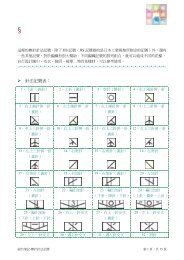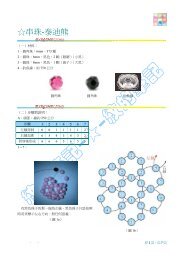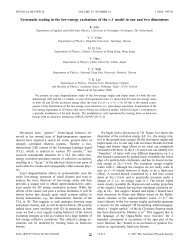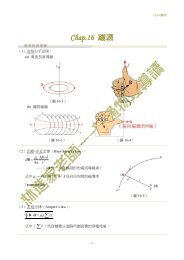Chapter 22 Materials Selection and Design Considerations
Chapter 22 Materials Selection and Design Considerations
Chapter 22 Materials Selection and Design Considerations
Create successful ePaper yourself
Turn your PDF publications into a flip-book with our unique Google optimized e-Paper software.
W112 • <strong>Chapter</strong> <strong>22</strong> / <strong>Materials</strong> <strong>Selection</strong> <strong>and</strong> <strong>Design</strong> <strong>Considerations</strong><br />
Frictional forces at these rubbing counterfaces should also be minimized to<br />
prevent loosening of the femoral stem <strong>and</strong> acetabular cup assembly from their<br />
positions secured by the fixation agent. If these components do become loose over<br />
time, the hip joint will experience premature degradation that may require it to<br />
be replaced.<br />
Three final important material factors are density, property reproducibility, <strong>and</strong><br />
cost. It is highly desirable that lightweight components be used, that material properties<br />
from prosthesis to prosthesis remain consistent over time, <strong>and</strong>, of course, that<br />
the cost of the prosthesis components be reasonable.<br />
Ideally, an artificial hip that has been surgically implanted should function satisfactorily<br />
for the life of the recipient <strong>and</strong> not require replacement. For current designs,<br />
lifetimes range between 15 <strong>and</strong> 25 years.While this is a substantial improvement from<br />
the previous five to ten year figures, longer lifetimes are still desirable.<br />
Several final comments are in order relative to biocompatibility assessment.<br />
Biocompatibility of materials is usually determined empirically; that is, tests are<br />
conducted wherein materials are implanted in laboratory animals <strong>and</strong> the biocompatibility<br />
of each material is judged on the basis of rejection reactions, level of<br />
corrosion, generation of toxic substances, etc. This procedure is then repeated on<br />
humans for those materials that were found to be relatively biocompatible in animals.<br />
It is difficult to a priori predict the biocompatibility of a material. For example,<br />
mercury, when ingested into the body, is poisonous; however, dental amalgams,<br />
which have high mercury contents, have generally been found to be very biocompatible.<br />
Because of this biocompatibility assessment issue, most manufacturers select<br />
only materials that have been approved for biomedical use.<br />
One final requirement for implant materials is that they be nonmagnetic [i.e.,<br />
not exhibit ferromagnetic or ferrimagnetic behavior (<strong>Chapter</strong> 20)]. A frequently<br />
used medical diagnostic tool is MRI (magnetic resonance imaging) spectroscopy, a<br />
medical test in which the patient is subjected to a very strong magnetic field. The<br />
presence of any ferromagnetic/ferrimagnetic materials implanted in the patient will<br />
disrupt the applied magnetic field, <strong>and</strong> render MRI spectroscopy unusable. In addition,<br />
the magnitudes of these magnetic fields are such that significant forces may<br />
be brought to bear on any magnetic implant materials, which forces may loosen the<br />
implant <strong>and</strong>/or harm the patient. Ferromagnetic materials that should be avoided<br />
for implant applications include some ferrous alloys (i.e., ferritic <strong>and</strong> martensitic<br />
stainless steels), <strong>and</strong> alloys having high contents of nickel <strong>and</strong>/or cobalt.<br />
<strong>22</strong>.12 MATERIALS EMPLOYED<br />
Femoral Stem <strong>and</strong> Ball<br />
Early prosthetic hip designs called for both the femoral stem <strong>and</strong> ball to be of the<br />
same material—a stainless steel. Subsequent improvements have been introduced,<br />
including the utilization of materials other than stainless steel <strong>and</strong>, in addition, constructing<br />
the stem <strong>and</strong> ball from different materials. Indeed, stainless steel is rarely<br />
used in current implant designs. The chapter-opening photograph for this chapter<br />
shows one hip replacement design.<br />
Currently, the femoral stem is constructed from a metal alloy of which there<br />
are two primary types: cobalt–chromium–molybdenum <strong>and</strong> titanium. Some models<br />
still use 316L stainless steel, which has a very low sulfur content (60.002 wt%); its<br />
composition is given in Table 11.4. The principal disadvantages of this alloy are its<br />
susceptibility to crevice corrosion <strong>and</strong> pitting <strong>and</strong> its relatively low fatigue strength.<br />
As a result its use has decreased.

















